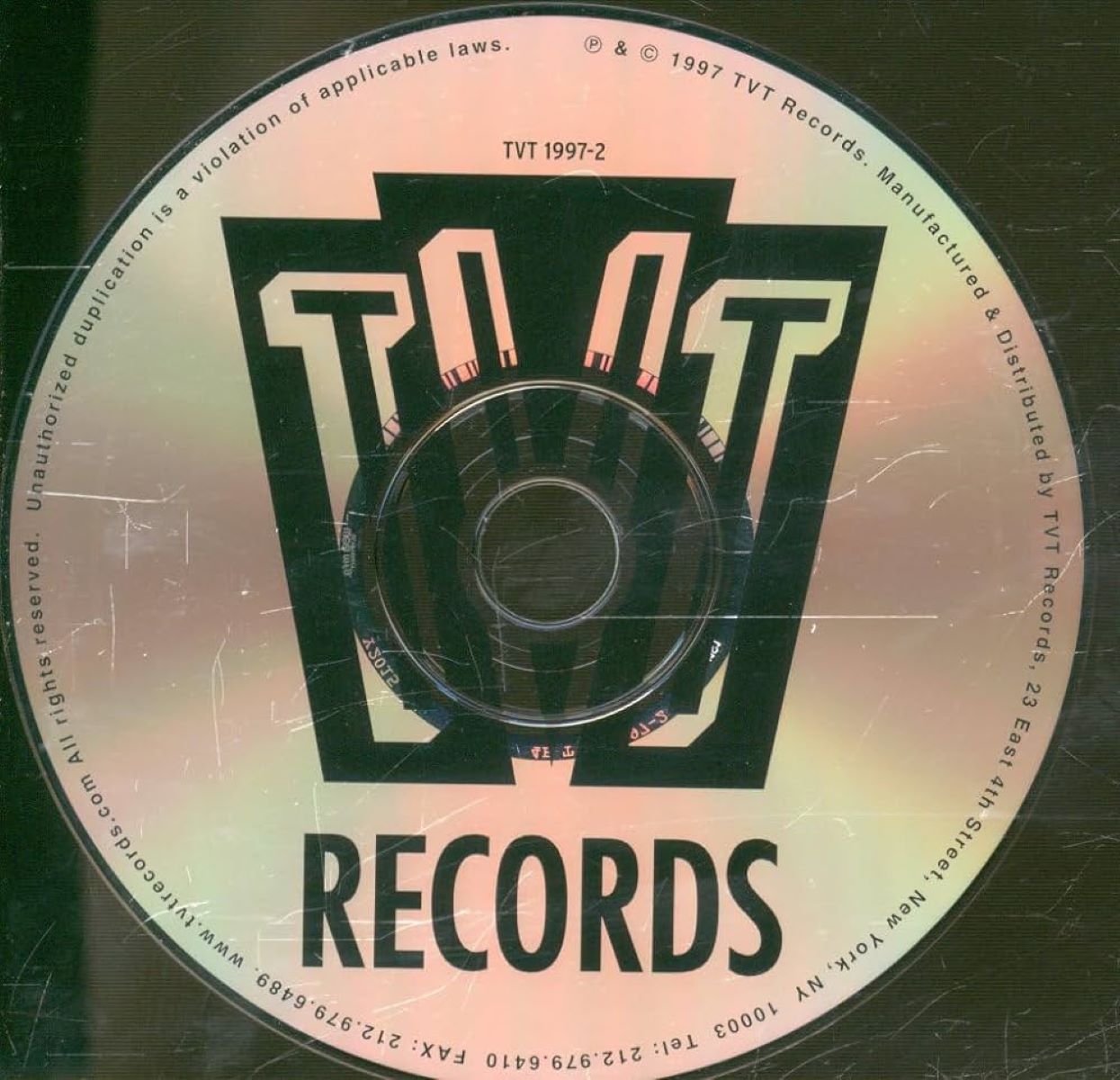Home>Production & Technology>Record Label>How To Manage Publishing As A Record Label


Record Label
How To Manage Publishing As A Record Label
Published: January 24, 2024
Learn how to effectively manage publishing as a record label. Gain insights into copyright, licensing, royalties, and more to maximize revenue and protect your musical assets.
(Many of the links in this article redirect to a specific reviewed product. Your purchase of these products through affiliate links helps to generate commission for AudioLover.com, at no extra cost. Learn more)
Table of Contents
- Introduction
- Setting Up a Publishing Department
- Hiring and Managing Publishing Staff
- Establishing Partnerships with Artists and Songwriters
- Music Copyrights and Licensing
- Catalog Management and Exploitation
- Royalty Collection and Distribution
- Monitoring and Enforcement of Publishing Rights
- Marketing and Promotion of Publishing Releases
- Digital Publishing and Streaming Platforms
- Future Trends in Publishing Management
- Conclusion
Introduction
Welcome to the world of record labels and the fascinating realm of publishing management. As a record label, managing the publishing aspect is crucial for maximizing the earning potential of your music catalog. In this article, we will explore the ins and outs of publishing management, guiding you through the process of setting up a publishing department, hiring and managing staff, establishing partnerships, navigating music copyrights and licensing, exploiting your catalog, collecting and distributing royalties, monitoring and enforcing rights, marketing and promoting releases, and adapting to digital publishing and streaming platforms.
Publishing management is the backbone of any successful record label. It encompasses the administration of the rights to musical compositions, including lyrics and melodies. By strategically managing the publishing aspect, record labels can secure income streams and ensure that the talents of their artists and songwriters are properly protected.
Throughout this article, we will dive into the various aspects of publishing management, providing you with valuable insights and practical tips to navigate this complex world. Whether you are an established record label looking to enhance your publishing efforts or a new label starting from scratch, this guide will help you streamline your operations and optimize your revenue potential.
We will explore the foundational steps of setting up a publishing department within your record label, including the key roles and responsibilities involved. From there, we will delve into hiring and managing publishing staff, ensuring that you have the right team in place to handle the complexities of intellectual property rights and royalty collection.
Establishing partnerships with artists and songwriters is crucial for publishing success, so we will discuss effective methods for building relationships and attracting talented individuals to collaborate with. Additionally, we will delve into the intricacies of music copyrights and licensing, as well as the importance of diligent catalog management and exploitation.
As royalties are the lifeblood of the publishing world, we will explore the intricacies of royalty collection and distribution, ensuring that every artist and songwriter receives their fair share of earnings. We will also discuss the critical role of monitoring and enforcement, protecting your publishing rights from unauthorized use or infringement.
Furthermore, we will address the marketing and promotion of publishing releases, emphasizing the importance of effectively showcasing and promoting your catalog to reach a wider audience. In the digital age, we cannot neglect the influence of digital publishing and streaming platforms, so we will discuss strategies for navigating this evolving landscape.
Finally, we will touch upon future trends in publishing management, keeping you up to date with the latest industry developments and innovations. By staying ahead of the curve, you can position your record label for continued success in the ever-changing music landscape.
So, get ready to dive into the world of publishing management for record labels. Let’s explore the steps, strategies, and best practices that will help you maximize your publishing potential and propel your record label to new heights.
Setting Up a Publishing Department
When it comes to managing the publishing aspect of your record label, one of the first essential steps is setting up a dedicated publishing department. This department will be responsible for overseeing the administration of your musical compositions, ensuring proper copyright protection, and maximizing revenue opportunities. Here are some key considerations when setting up your publishing department:
1. Identify the Key Roles: Start by determining the key roles required for your publishing department. This may include a Publishing Director, Copyright Administrator, Royalty Analyst, and Licensing Manager. Each role plays a crucial part in the smooth operation of your publishing department.
2. Hire Knowledgeable Staff: Look for individuals with experience and expertise in music publishing. They should have a strong understanding of copyright laws, licensing regulations, royalty collection, and music industry trends. It’s essential to have a team that can effectively navigate the complexities of the publishing landscape.
3. Define Responsibilities and Workflows: Clearly define the responsibilities of each team member and establish efficient workflows for tasks such as copyright registration, licensing negotiations, royalty tracking, and catalog management. Having well-defined processes in place will ensure smooth operations and minimize errors or delays.
4. Implement Publishing Software: Invest in specialized publishing software to streamline your operations. Look for software that can handle catalog management, royalty tracking, licensing agreements, and reporting. These tools can save time and improve the accuracy and efficiency of your publishing administration.
5. Establish Communication Channels: Foster effective communication within the publishing department and with other departments within your record label. Regular updates and collaboration are essential for smooth operations and maximizing revenue opportunities. Consider implementing project management software or communication tools to facilitate seamless communication.
6. Stay Informed: The music industry and publishing landscape are continually evolving. Encourage your publishing team to stay updated on industry news, regulations, and emerging trends. Attend conferences, webinars, and workshops to expand knowledge and network with industry professionals.
7. Develop a Publishing Strategy: Create a publishing strategy that aligns with your record label’s goals and artistic vision. Determine the types of artists and songwriters you want to work with and the genres you want to focus on. This will guide your outreach efforts, catalog development, and licensing strategies.
By setting up a dedicated publishing department, you are taking a crucial step towards effectively managing the publishing aspect of your record label. With the right team and processes in place, you can ensure that your music compositions are protected, maximize revenue opportunities, and ultimately support the success of your artists and songwriters.
Hiring and Managing Publishing Staff
Building a competent and dedicated team is paramount to the success of your publishing department. Hiring and managing the right publishing staff ensures that your musical compositions are properly managed and protected. Here are some key considerations when hiring and managing publishing staff:
1. Identify Key Positions: Determine the specific roles required for your publishing department based on your needs and goals. This may include copyright administrators, licensing specialists, royalty analysts, and publishing coordinators. Define the responsibilities and qualifications for each position.
2. Seek Industry Experience: Look for candidates with relevant industry experience in music publishing, copyright law, licensing, and royalty collection. Experience helps ensure that your staff is well-versed in the intricacies of publishing administration and can effectively handle the challenges that may arise.
3. Assess Technical Skills: In addition to industry knowledge, evaluate the technical skills of potential candidates. They should be proficient in using publishing software, accounting systems, and royalty tracking tools. Strong attention to detail and analytical skills are also essential for accurate catalog management and royalty calculations.
4. Emphasize Strong Communication: Effective communication within the publishing department and with external stakeholders is vital. Look for candidates who can effectively communicate complex publishing matters in a clear and concise manner. They should be able to negotiate licensing deals, communicate copyright issues, and collaborate with other departments within the label.
5. Cultural Fit: When hiring publishing staff, consider the overall culture of your record label. Look for individuals who align with your core values, work well in a team, and have a passion for music. A positive and collaborative work environment fosters creativity and productivity.
6. Provide Training and Development: Once you have assembled your publishing team, invest in their ongoing training and development. Stay updated with industry developments and provide opportunities for your staff to enhance their skills and knowledge through workshops, conferences, and online courses.
7. Establish Performance Metrics: Clearly define performance metrics and goals for each publishing staff member. Regularly evaluate their performance and provide constructive feedback. Recognize and reward outstanding work to motivate and incentivize your team.
8. Foster Collaboration: Encourage collaboration and knowledge sharing within your publishing department. Regular team meetings and brainstorming sessions allow for the exchange of ideas and ensure that everyone is aligned with the publishing goals and strategies of the record label.
9. Maintain Flexibility: The music industry is dynamic, and the publishing landscape continually evolves. Encourage your publishing staff to adapt and be open to new opportunities and technologies. Foster an environment that embraces change and encourages innovative thinking.
By hiring and managing skilled and dedicated publishing staff, you are building the foundation for effective publishing administration within your record label. With the right team in place, you can ensure that your musical compositions are properly protected, licensing deals are negotiated, and royalties are accurately tracked and distributed. This, in turn, supports the success of your artists, songwriters, and the overall growth of your record label.
Establishing Partnerships with Artists and Songwriters
Establishing strong partnerships with talented artists and songwriters is essential for the success of your record label’s publishing efforts. These partnerships form the foundation for a thriving publishing catalog and open up various revenue streams. Here are some key considerations when it comes to establishing partnerships with artists and songwriters:
1. Identify and Attract Talent: Take the time to identify and attract talented artists and songwriters who align with your label’s musical direction and vision. Attend industry events, showcases, and workshops to discover emerging talent. Research and networking can help you identify potential collaborators with whom you can build long-term partnerships.
2. Build Trust and Rapport: Establish a relationship built on trust, transparency, and mutual respect. Artists and songwriters should feel confident that their work will be properly managed and protected under your publishing department’s care. Open and honest communication is key to nurturing these partnerships.
3. Offer Support and Guidance: Provide support and guidance to artists and songwriters beyond just securing publishing rights. Offer assistance with songwriting development, connecting them with co-writers or producers, and providing resources to enhance their creative process. This collaborative approach strengthens your partnership and fosters loyalty.
4. Tailor Agreements to Individual Needs: Take the time to understand the specific needs and goals of each artist or songwriter. Tailor your agreements to accommodate their unique circumstances, such as co-publishing deals or specific licensing arrangements. Flexibility and customization demonstrate your commitment to their success.
5. Collaborate in Catalog Development: Work closely with artists and songwriters to develop their catalog, identifying songs with strong commercial potential. Offer feedback and guidance on song selection, production, and arrangement, ensuring that their catalog is optimized for maximum impact and revenue generation.
6. Maximize Licensing Opportunities: Leverage your relationships and industry connections to secure lucrative licensing opportunities for your artists and songwriters. Pitch their songs for film, TV, commercials, and other media placements. Actively seek sync licensing deals and explore opportunities for cover versions or remixes of their songs.
7. Provide International Reach: Expand the reach of your artists and songwriters by exploring international publishing opportunities. Consider sub-publishing agreements or partnerships with international publishing companies to ensure that your catalog is properly represented and exploited in different territories.
8. Transparent Royalty Reporting: Maintain transparency in royalty reporting to artists and songwriters. Use reliable accounting systems and royalty tracking software to provide accurate and timely statements. Clear and detailed reporting builds trust and reinforces your commitment to fair and equitable treatment.
9. Nurture Long-Term Relationships: Cultivate long-term relationships with your artists and songwriters. Offer ongoing support throughout their careers, actively seeking new opportunities for collaboration and revenue generation. Celebrate their successes and stand by them during challenging times, demonstrating your dedication to their artistic journey.
By establishing strong and mutually beneficial partnerships with artists and songwriters, you can create a robust and successful publishing catalog. These relationships lay the foundation for revenue growth and artistic collaboration, ultimately driving the success of your record label’s publishing efforts.
Music Copyrights and Licensing
Understanding music copyrights and navigating licensing agreements are crucial aspects of publishing management for record labels. It is essential to protect the intellectual property rights of your artists and songwriters while properly monetizing their creations. Here are key considerations when it comes to music copyrights and licensing:
1. Copyright Basics: Familiarize yourself with the fundamentals of music copyrights. A copyright grants exclusive rights to the creators of original musical works, including lyrics and melodies. It provides protection from unauthorized use, reproduction, distribution, and performance of the copyrighted works.
2. Registering Copyrights: Encourage your artists and songwriters to register their copyrights with the relevant copyright authorities, such as the US Copyright Office. Registering copyrights strengthens legal protection and facilitates the enforcement of rights in case of infringement.
3. License Types: Understand the different types of licenses required for music usage. These may include mechanical licenses for reproducing and distributing the musical work, synchronization licenses for music used in audiovisual projects, performance licenses for public performances, and print licenses for sheet music publications. Each license grants specific rights and requires negotiation or clearance.
4. Master and Publishing Rights: Differentiate between master rights and publishing rights. The master rights refer to the recording of a specific performance or sound recording, typically owned by the record label or the artist. The publishing rights relate to the musical composition itself, encompassing the lyrics and melodies, which are usually administered by the publishing department of the label.
5. Negotiating Licensing Agreements: Work closely with artists, songwriters, and their representatives to negotiate licensing agreements. These agreements outline the terms and conditions for the authorized use of the music. Ensure that the agreements are comprehensive, protecting the rights and interests of the music creators and the record label.
6. Sync Licensing: Explore sync licensing opportunities for your music. Sync licensing involves the placement of music in audiovisual projects such as films, TV shows, commercials, and video games. Develop relationships with music supervisors, production houses, and advertising agencies to actively pitch your catalog for sync opportunities.
7. Performance Rights Organizations (PROs): Register your artists’ and songwriters’ compositions with performance rights organizations such as ASCAP, BMI, or SESAC. These PROs collect performance royalties for public performances of the music, including radio and TV broadcasts, live performances, and streaming services. Joining a PRO ensures that these performance royalties are collected and distributed to the rightful owners.
8. Sample Clearances: If your artists or songwriters incorporate samples from pre-existing works in their compositions, ensure that proper sample clearances are obtained. Unauthorized use of samples can lead to legal issues and hinder the commercial exploitation of the new compositions. Work with legal experts to navigate the complexities of sample clearance.
9. Stay Updated with Licensing Trends: The music licensing landscape continually evolves with emerging technologies, digital platforms, and new business models. Stay updated with licensing trends, such as the rise of streaming services, user-generated content platforms, and emerging markets. Adapt your licensing strategies to ensure that your music is effectively monetized in the ever-changing music industry.
By having a strong understanding of music copyrights and licensing, you can protect the rights of your artists and songwriters while maximizing revenue opportunities. Navigating licensing agreements, securing sync placements, and working with performance rights organizations are vital components of a successful publishing management strategy for your record label.
Catalog Management and Exploitation
Effective catalog management and exploitation are essential for maximizing the revenue potential of your record label’s publishing efforts. A well-organized and strategically exploited catalog can generate income from various sources, including licensing, streaming, and sync placements. Here are key considerations for catalog management and exploitation:
1. Organize Your Catalog: Establish a centralized catalog management system that includes all the musical compositions owned or administered by your record label. Make sure the catalog includes accurate metadata, including songwriter information, copyright details, and publishing information. This ensures that your catalog is properly represented and searchable.
2. Regularly Update Metadata: Keep your catalog metadata up to date, including any changes to publishing splits, ownership, or contact information. Accurate metadata is crucial for proper royalty tracking, licensing negotiations, and copyright administration.
3. Catalog Assessment: Regularly assess your catalog to determine which compositions have the most commercial potential. Evaluate factors such as streaming and download numbers, sync licensing placements, and listener feedback. This helps prioritize promotional efforts and focus on compositions that have the highest revenue-generating potential.
4. Exploit Licensing Opportunities: Actively seek licensing opportunities for your catalog. Pitch your songs to music supervisors, filmmakers, advertising agencies, and other potential licensees. Explore opportunities for placements in films, TV shows, commercials, video games, and other media projects. Licensing agreements can provide significant income streams for your catalog.
5. Streamlining Digital Distribution: Ensure that your catalog is available on major digital platforms and streaming services. Work with digital distributors or streaming aggregators to make your music easily accessible to a global audience. Leverage the power of online platforms to reach listeners and generate digital revenue.
6. Collaborate with Artists and Songwriters: Foster collaboration with your artists and songwriters to create new opportunities for catalog exploitation. Encourage them to contribute to other projects, collaborate with other artists, or participate in compilation albums. These collaborations can expand the exposure and reach of your catalog.
7. International Exploitation: Explore opportunities for international catalog exploitation. Consider sub-publishing agreements, partnerships with international record labels or publishing companies, or licensing your catalog to overseas entities. This allows for global exposure and revenue generation in different territories.
8. Regular Royalty Audits: Conduct regular royalty audits to ensure that you are receiving all the royalties owed to you for the use of your catalog compositions. Check royalty statements for accuracy and consistency. If discrepancies are found, take necessary steps to resolve them and ensure proper collection and distribution of royalties.
9. Monitor and Adapt: Continuously monitor the performance of your catalog and adapt your strategies accordingly. Stay informed about new trends and emerging markets in the music industry. Adjust your promotional efforts, licensing strategies, and catalog curation based on market demands to optimize revenue from your catalog.
By implementing effective catalog management and exploitation strategies, you can unlock the full potential of your record label’s publishing catalog. This not only generates revenue but also showcases the talent within your roster and solidifies your reputation as a successful publishing entity in the music industry.
Royalty Collection and Distribution
Ensuring proper royalty collection and distribution is a crucial aspect of publishing management for record labels. By efficiently tracking and managing royalties, you can accurately compensate your artists, songwriters, and other rights holders. Here are key considerations for royalty collection and distribution:
1. Royalty Tracking Systems: Implement reliable royalty tracking systems to monitor the usage of your catalog and accurately calculate royalty amounts. Utilize specialized software or work with reputable royalty collection agencies to streamline the process.
2. Royalty Collection Societies: Register your artists and songwriters with royalty collection societies such as ASCAP, BMI, or PRS. These societies collect performance royalties for public performances of your catalog, including radio and TV broadcasts, live performances, and streaming services. They ensure that the rightful owners receive their fair share of the earnings.
3. Registering Works: Register your artists’ and songwriters’ works with the appropriate copyright authorities and royalty collection societies. Ensure that all relevant information, including ownership splits, is accurately documented for efficient collection and distribution of royalties.
4. International Royalty Collection: Explore international royalty collection through sub-publishing agreements or partnerships with foreign collection societies. This allows you to collect royalties from international territories where your catalog is being used, ensuring that your artists and songwriters are compensated worldwide.
5. Digital Royalty Collection: Stay up to date with digital royalty collection and licensing practices. Register your catalog with digital collection agencies and music streaming platforms to ensure that you receive royalties from online streams and downloads. Monitor digital revenue streams and address any discrepancies promptly.
6. Royalty Distribution Process: Establish a clearly defined process for royalty distribution. Define the frequency of royalty statements, the payment schedule, and the format in which statements are delivered to your artists and songwriters. Transparency and accuracy in royalty distribution help build trust and maintain strong artist-label relationships.
7. Statement Transparency: Ensure that royalty statements are transparent and provide detailed information regarding usage, earnings, and deductions. Clear and comprehensible statements enable your artists and songwriters to understand their earnings and verify the accuracy of the reported royalties.
8. Addressing Discrepancies: Promptly address any discrepancies or concerns raised by your artists and songwriters regarding royalty payments. Investigate the issue, rectify any errors, and provide clear explanations to ensure fair and accurate compensation.
9. Artist Education and Communication: Educate your artists and songwriters about royalty collection and distribution processes. Provide resources and guidance to help them understand how their music generates revenue and how royalties are calculated. Regular communication with your artists fosters trust and ensures a shared understanding of the royalty collection and distribution process.
By implementing effective royalty collection and distribution practices, you can ensure that your artists and songwriters receive the compensation they deserve for their creative works. Transparent and accurate royalty management strengthens your relationships with artists and maintains a healthy and sustainable publishing ecosystem within your record label.
Monitoring and Enforcement of Publishing Rights
Monitoring and enforcing publishing rights is vital for protecting the intellectual property of your record label’s catalog. By actively monitoring the use of your music and taking necessary action against unauthorized usage or infringement, you can safeguard the rights of your artists, songwriters, and the value of your publishing assets. Here are key considerations for monitoring and enforcing publishing rights:
1. Copyright Registration: Register your copyrights with the relevant copyright authorities. This provides legal evidence of ownership and strengthens your ability to take action against infringement.
2. Monitoring Platforms and Services: Utilize monitoring platforms and services to track the usage of your catalog. These services can help identify instances of unauthorized usage or infringement in various mediums, such as radio, television, streaming platforms, and user-generated content platforms.
3. Utilize Copyright Monitoring Tools: Make use of copyright monitoring tools and technologies that can automatically scan and detect instances where your music is being used without permission. These tools can provide alerts on unauthorized use, allowing you to take prompt action.
4. Issuing Cease and Desist Letters: If you discover unauthorized use or infringement, issue cease and desist letters to the parties involved. These letters formally notify the infringers of the violation and demand that they cease using the copyrighted material immediately. Keep records of all correspondence and responses.
5. Legal Remedies: If cease and desist letters are not effective in stopping infringement, consult with legal professionals to explore possible legal remedies. This may involve initiating copyright infringement lawsuits to protect your rights and seek appropriate damages.
6. Produce Watermarked Promotional Copies: When providing promotional copies of your music to industry professionals, consider watermarking the files. Watermarks can deter unauthorized distribution and make it easier to identify the source in case of misuse.
7. Licensing Agreements: Include robust provisions in licensing agreements that clearly define the permitted usage of the music and specify consequences for unauthorized usage or infringement. Clear contractual terms help protect your rights and provide a strong foundation for legal action if needed.
8. Stay Informed of Industry Changes: Stay updated on changes in the music industry and copyright laws. Keep track of precedents set by legal cases involving copyright infringement. This knowledge will inform your enforcement strategies and ensure that you are operating within the boundaries of current copyright regulations.
9. Proactive Communication with Industry Partners: Foster open communication with industry partners, such as sync licensing agents, streaming platforms, and broadcasters. Regularly communicate your expectations regarding the authorized usage of your catalog and promptly address any instances of potential infringement.
By actively monitoring and enforcing publishing rights, you can protect the value of your catalog and safeguard the rights of your artists and songwriters. Proactive measures and a vigilant approach to enforcement ensure that your music is used appropriately and that your revenue streams remain intact within the ever-changing landscape of the music industry.
Marketing and Promotion of Publishing Releases
The marketing and promotion of publishing releases play a significant role in maximizing the reach and impact of your record label’s catalog. It involves creating awareness, generating interest, and driving consumption of your music among fans, industry professionals, and potential licensees. Here are key considerations for marketing and promoting your publishing releases:
1. Build a Marketing Plan: Develop a comprehensive marketing plan for each release. Identify your target audience, set goals, allocate resources, and create a timeline for promotional activities. A well-defined plan helps you stay focused, organized, and effective in your marketing efforts.
2. Utilize Various Channels: Utilize a mix of traditional and digital marketing channels to reach a broader audience. This includes leveraging social media platforms, email marketing, press releases, influencer partnerships, music blogs, radio stations, and targeted advertising campaigns. Tailor your approach based on the preferences and behavior of your target audience.
3. Engage with Fans and Followers: Connect and engage with your fans and followers through social media platforms and other online communities. Interact with them, respond to comments, and create opportunities for them to participate in the promotion of your releases. Foster a sense of community and loyalty around your catalog.
4. Create Compelling Content: Develop high-quality promotional content that showcases the unique appeal of each release. This includes music videos, lyric videos, behind-the-scenes footage, interviews, and exclusive content. Use visually engaging and shareable content to captivate and excite your audience.
5. Collaborate with Influencers: Collaborate with influencers, bloggers, tastemakers, and industry professionals who have an organic following and influence in your target market. Seek opportunities for playlist placements, guest appearances, interviews, or blog features. Their endorsement can amplify your reach and credibility.
6. Foster Media Relationships: Develop relationships with journalists, music editors, and media outlets. Distribute press releases, pitch stories, and cultivate contacts who can cover your releases. Positive media coverage can generate buzz and expand your visibility.
7. Sync Licensing Promotion: Highlight your catalog’s sync licensing potential and actively promote it to music supervisors, film directors, ad agencies, and other potential licensees. Create dedicated sync reels, showcasing the versatility and quality of your music for use in films, TV shows, commercials, and other audiovisual projects.
8. Leverage Live Performances: Capitalize on live performances by your artists to promote your catalog. Arrange showcase performances, support tours, and collaborations with like-minded artists. Performances serve as powerful platforms to introduce and connect audiences to your music.
9. Engage in Strategic Partnerships: Explore strategic partnerships with brands, influencers, and other record labels. Co-marketing campaigns, brand collaborations, and cross-promotions can expose your catalog to new audiences and create mutually beneficial opportunities for promotion.
By implementing effective marketing and promotion strategies, you can increase the visibility and consumption of your record label’s publishing releases. Engaging with fans, leveraging various marketing channels, creating compelling content, and building industry relationships all contribute to the successful promotion of your catalog and the growth of your publishing efforts.
Digital Publishing and Streaming Platforms
The rise of digital publishing and streaming platforms has transformed the music industry landscape, presenting both opportunities and challenges for record labels. Embracing digital publishing and effectively navigating streaming platforms is essential for maximizing the visibility, reach, and revenue potential of your record label’s catalog. Here are key considerations for digital publishing and streaming platforms:
1. Distribution to Streaming Platforms: Ensure that your catalog is available on all major streaming platforms, such as Spotify, Apple Music, Amazon Music, and Deezer. Work with digital distributors or streaming aggregators to facilitate the distribution process and make your music easily accessible to a global audience.
2. Curation and Playlist Placement: Focus on securing inclusion in playlists curated by streaming platforms and influential music curators. Playlist placements increase visibility and the likelihood of discovery by new listeners. Develop relationships with playlist curators and actively pitch your catalog for these coveted placements.
3. Metadata Optimization: Pay careful attention to metadata when uploading your music to streaming platforms. Accurate and detailed metadata, including track titles, artist names, album information, and genre categorization, enhances discoverability and ensures that your catalog is properly represented in search results and recommendation algorithms.
4. Digital Marketing Strategies: Develop digital marketing strategies tailored for streaming platforms. Utilize targeted advertising, pre-save campaigns, and call-to-action campaigns to drive traffic and direct listeners to your catalog on streaming platforms. Leverage social media and online promotions to increase engagement and foster excitement around new releases.
5. Data Analysis and Insights: Leverage the analytics provided by streaming platforms to gain insights into listener behavior, geographic trends, and consumption patterns. Utilize this data to inform your marketing strategies, playlist pitching, and decision-making process for future releases.
6. Embrace New Audio Formats: Stay up-to-date with evolving audio formats and technologies, such as high-resolution audio and immersive audio experiences. Expanding your catalog to encompass these formats can provide additional revenue opportunities and cater to the preferences of audiophiles and music enthusiasts.
7. Diversify Revenue Streams: Look beyond streaming revenue by exploring alternative revenue streams within the digital realm. This can include opportunities for sync licensing, collaboration with content creators for video projects, livestream events, and even branded content partnerships. Think creatively about how to leverage the digital landscape to generate diverse sources of income.
8. Discover and Sign Digital-Native Artists: As the digital landscape continues to shape the music industry, consider scouting and signing artists who have found success in the digital realm. These digital-native artists can bring a unique perspective and understanding of the digital publishing and streaming platforms, helping you stay ahead of the curve.
9. Adapt to Evolving Platforms: Be agile and adaptable in response to the ever-changing nature of digital publishing and streaming platforms. Stay informed about updates, algorithm changes, and new features introduced by streaming platforms. This allows you to adjust your strategies and capitalize on emerging opportunities for increased visibility and engagement with your catalog.
By effectively embracing digital publishing and understanding the nuances of streaming platforms, you can expand the reach of your record label’s catalog, connect with a global audience, and maximize revenue potential. Adaptation, strategic marketing, and data-driven decision-making will help your record label thrive in the digital music ecosystem.
Future Trends in Publishing Management
As the music industry continues to evolve, it’s crucial for record labels to stay ahead of emerging trends in publishing management. Adapting to these trends can elevate your publishing efforts, drive revenue growth, and maintain relevance in a rapidly changing landscape. Here are some future trends you should consider:
1. Artificial Intelligence (AI) and Machine Learning: AI and machine learning technologies are revolutionizing the music industry. These tools can be utilized for tasks such as royalty tracking, content recommendation algorithms, and predictive analytics. Implementing AI-powered solutions can increase efficiency, accuracy, and provide valuable insights for decision-making processes.
2. Blockchain and Smart Contracts: Blockchain technology provides a transparent and secure method for managing music rights and royalty payments. Smart contracts, built on blockchain, can automate royalty calculations and ensure faster, more accurate distribution of payments. Exploring the potential of blockchain in publishing management can enhance transparency and significantly streamline royalty processes.
3. Data-Driven A&R Strategies: Utilize data analytics and streaming platform insights to inform your artist and repertoire (A&R) strategies. Analyzing consumption patterns, listener behavior, and market trends can help you identify emerging artists, genres, and market segments. Incorporating data-driven insights into your A&R decisions can increase the chances of success and better align your catalog with audience preferences.
4. Direct-to-Fan Engagement: Cut through intermediaries and foster direct relationships with fans. Utilize digital platforms, such as social media, email newsletters, and fan clubs, to engage directly with your audience. This allows you to better understand fan preferences, gather feedback, and provide exclusive content and experiences, leading to increased loyalty and revenue opportunities.
5. Virtual Reality (VR) and Augmented Reality (AR) Experiences: Embrace the immersive capabilities of VR and AR technologies to enhance the promotion and monetization of your catalog. Create interactive VR/AR experiences, virtual concerts, or 360-degree music videos to offer unique and engaging experiences for listeners. These technologies can provide additional revenue streams and deepen fan engagement.
6. Global Expansion and Localization: Capitalize on the globalization of music consumption by expanding into new markets and catering to local preferences. Localize your content, marketing strategies, and licensing efforts to resonate with diverse audiences worldwide. Collaborate with international partners and focus on emerging music markets for growth opportunities.
7. Focus on Sustainability and Social Responsibility: With increasing awareness of environmental and social issues, consumers expect brands, including record labels, to prioritize sustainability and social responsibility. Incorporate sustainable practices into your operations, support causes aligned with your values, and promote ethical practices in royalty distribution and contracts.
8. Continued Growth of User-Generated Content (UGC) Platforms: User-generated content platforms like TikTok and YouTube continue to shape the music industry. Embrace and engage with these platforms to amplify the reach of your catalog. Encourage user-generated content creation, run viral challenges, and actively monitor and monetize the usage of your music on these platforms.
9. Evolving Revenue Models: Explore new revenue models beyond traditional streaming and licensing. This includes fan subscriptions, crowdfunding, merchandise sales, brand partnerships, and innovative monetization strategies for live performances and virtual events. Diversifying your revenue streams helps future-proof your publishing efforts and adapt to changing consumer behaviors.
By embracing these future trends in publishing management, your record label can position itself for continued success and relevance in the ever-evolving music industry. Stay curious, adapt to new technologies and consumer behaviors, and proactively explore innovative approaches to maximize your publishing potential.
Conclusion
Managing publishing as a record label is a multifaceted endeavor that requires careful attention to detail, strategic planning, and adaptability to industry trends. By setting up a dedicated publishing department, hiring knowledgeable staff, establishing partnerships with artists and songwriters, understanding music copyrights and licensing, effectively managing and exploiting your catalog, collecting and distributing royalties, monitoring and enforcing publishing rights, and implementing marketing and promotion strategies, you can maximize the revenue potential of your record label’s publishing efforts.
Furthermore, with the advent of digital publishing and streaming platforms, it is crucial to embrace the opportunities presented by these platforms. Leveraging digital technology, engaging with fans directly, and exploring emerging trends such as AI, blockchain, and immersive experiences can propel your publishing efforts forward, ensuring that you remain at the forefront of the ever-changing music industry.
Additionally, staying informed about future trends in publishing management allows you to proactively adapt and capitalize on emerging opportunities. The use of AI, machine learning, data-driven strategies, and innovative revenue models will shape the future of publishing, providing new avenues for growth and revenue generation.
In conclusion, managing publishing as a record label requires a combination of business acumen, artist advocacy, and adaptability to technological advancements. By implementing effective strategies, embracing emerging trends, and nurturing strong relationships with artists, songwriters, and industry professionals, your record label can thrive in the publishing landscape, maximizing revenue potential, and supporting artistic creativity. The evolving nature of the music industry demands ongoing learning, flexibility, and a commitment to providing exceptional publishing services. By continuously evolving and staying ahead of the curve, you can cement your record label’s position as a leader in the world of music publishing.











